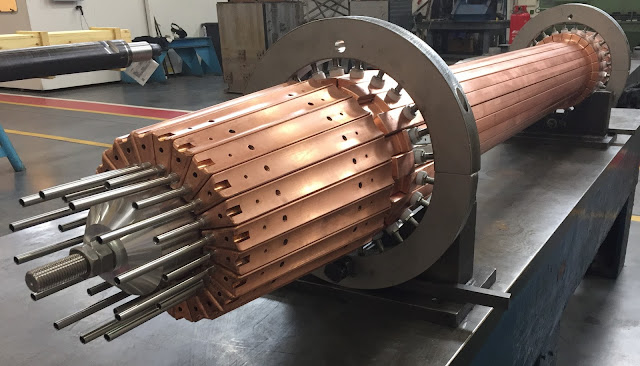Tokamak Energy plans net electricity production fusion by 2025 and commercial grid production by 2030
by noreply@blogger.com (brian wang) from NextBigFuture.com on (#2AVJ8)
Experimental and theoretical research has shown 'spherical' tokamaks to be a "fast route to fusion" compared with more "conventional" tokamak devices such as Joint European Torus (JET), according to David Kingham, chief executive of Tokamak Energy.
"By pursuing this route, fusion researchers around the world, including at Tokamak Energy, are developing new materials and technologies to help us get fusion power into the grid by 2030," Kingham told a meeting held last week by the International Energy Agency (IEA) on developing fusion power. Tokamak Energy was invited as "one of the three most promising fusion concepts", along with General Fusion and Tri-Alpha Energy.
The UK's Tokamak Energy grew out of Culham Laboratory, home to JET - the world's most powerful tokamak - and the world's leading centre for magnetic fusion energy research. Tokamak Energy's technology revolves around high temperature superconducting (HTS) magnets, which allow for relatively low-power and small-size devices, but high performance and potentially widespread commercial deployment.
The world's first tokamak with exclusively HTS magnets - the ST25 HTS, Tokamak Energy's second reactor - demonstrated 29 hours continuous plasma during the Royal Society Summer Science Exhibition in London in 2015 - a world record.
"The plasma is where the fusion reaction takes place, and its stability is crucial," Kingham said.
The next reactor in construction - the ST40 - would produce plasma temperatures of 15 million degrees Celsius - hotter than the centre of the Sun - this year. The ST40 is currently being built at Tokamak Energy's facility at Milton Park in Oxfordshire.
 Center column of the Spherical Tokomak ST40
Center column of the Spherical Tokomak ST40

Read more










"By pursuing this route, fusion researchers around the world, including at Tokamak Energy, are developing new materials and technologies to help us get fusion power into the grid by 2030," Kingham told a meeting held last week by the International Energy Agency (IEA) on developing fusion power. Tokamak Energy was invited as "one of the three most promising fusion concepts", along with General Fusion and Tri-Alpha Energy.
The UK's Tokamak Energy grew out of Culham Laboratory, home to JET - the world's most powerful tokamak - and the world's leading centre for magnetic fusion energy research. Tokamak Energy's technology revolves around high temperature superconducting (HTS) magnets, which allow for relatively low-power and small-size devices, but high performance and potentially widespread commercial deployment.
The world's first tokamak with exclusively HTS magnets - the ST25 HTS, Tokamak Energy's second reactor - demonstrated 29 hours continuous plasma during the Royal Society Summer Science Exhibition in London in 2015 - a world record.
"The plasma is where the fusion reaction takes place, and its stability is crucial," Kingham said.
The next reactor in construction - the ST40 - would produce plasma temperatures of 15 million degrees Celsius - hotter than the centre of the Sun - this year. The ST40 is currently being built at Tokamak Energy's facility at Milton Park in Oxfordshire.
 Center column of the Spherical Tokomak ST40
Center column of the Spherical Tokomak ST40
Read more